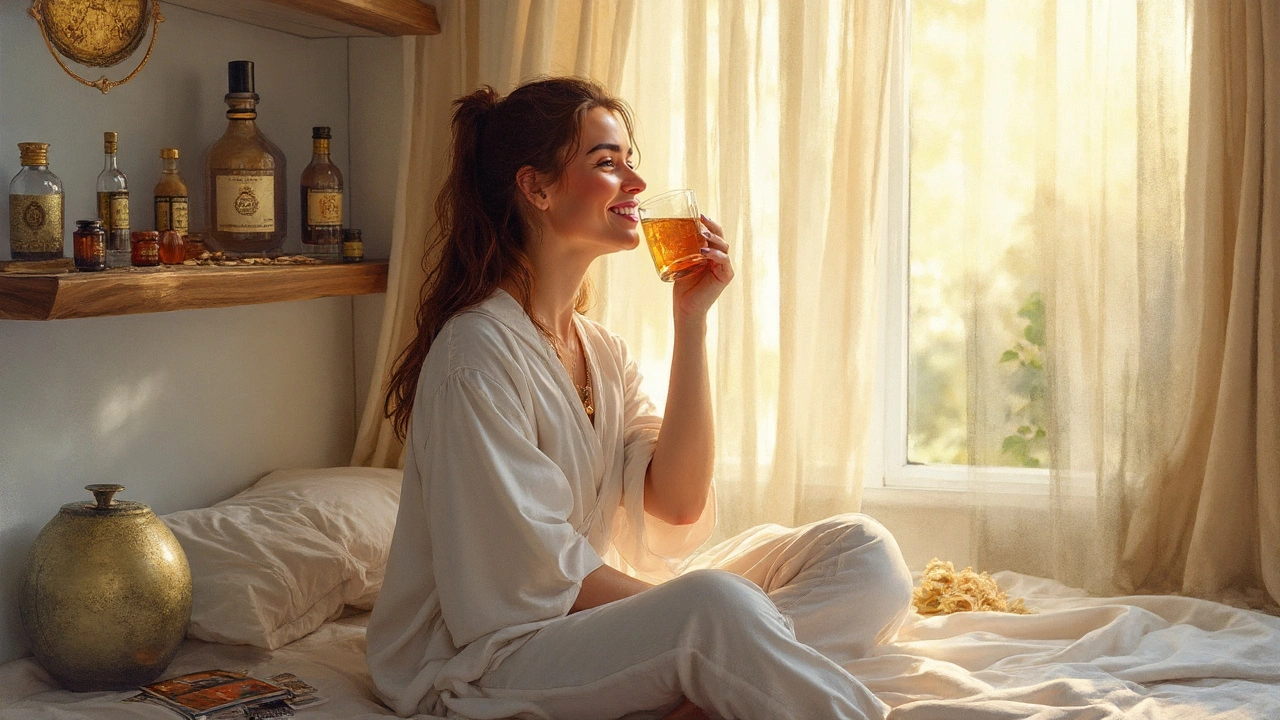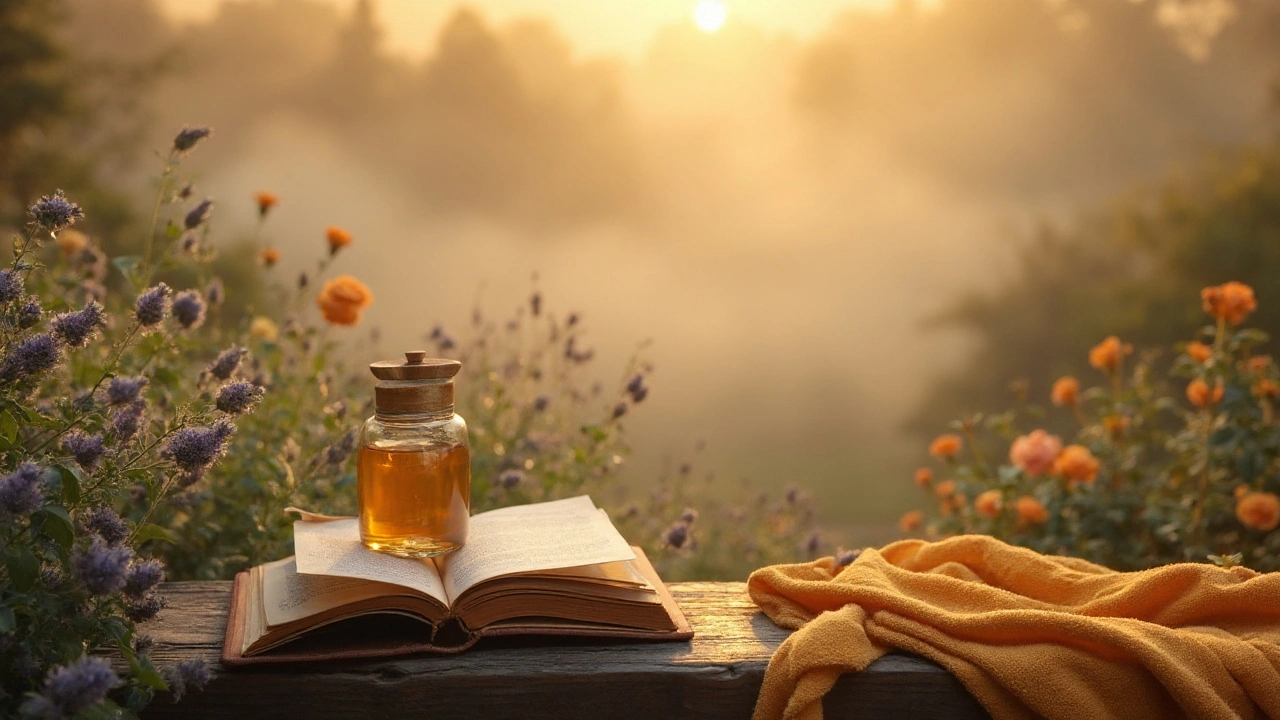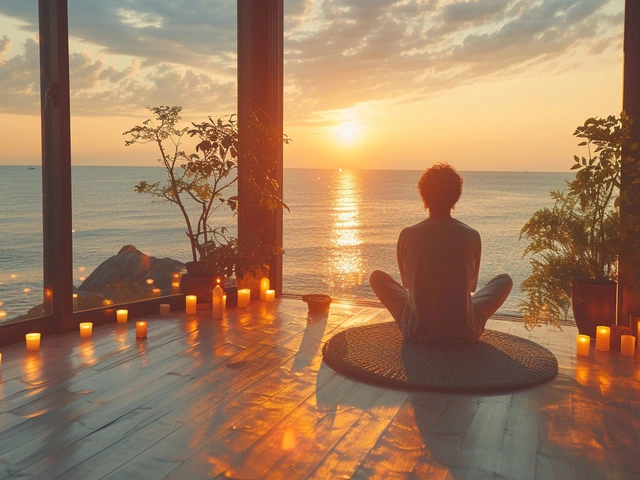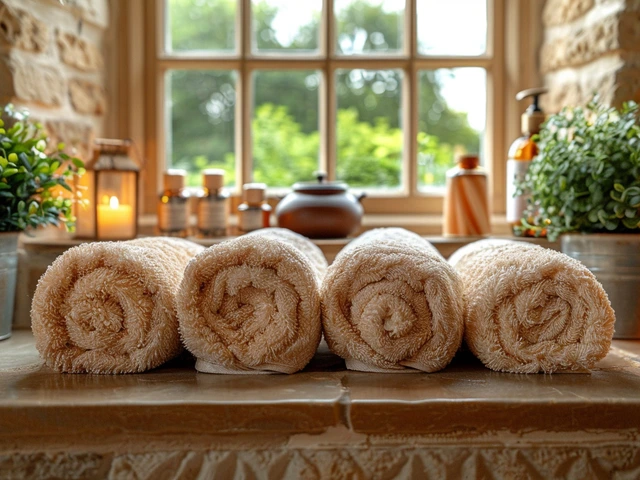Abhyanga Dosha Quiz
1. Which describes your typical energy level?
2. How does your body typically respond to stress?
3. Which food taste do you prefer most?
Abhyanga Oil Massage is a traditional Ayurvedic full‑body oil massage that uses warm herbal oils to nourish the skin, stimulate circulation, and harmonize the body’s doshas. Rooted in ancient Indian medicine, this practice goes beyond relaxation; it’s a therapeutic ritual that targets the Marma points vital energy junctions in the body similar to acupuncture points and supports the lymphatic system the network that removes waste and toxins from tissues. In the sections below you’ll learn what makes Abhyanga massage effective, how to do it at home, and when it stacks up against other popular massage styles.
What Is Abhyanga?
In the context of Ayurvedic Medicine a holistic health system that dates back over 5,000 years, "abhyanga" means "to rub" or "to anoint". Practitioners warm a carrier oil-most commonly Sesame Oil rich in antioxidants, linoleic acid, and mineral nutrients-and massage it across the entire body in long, rhythmic strokes. The oil’s properties, combined with the pressure on specific marma points, are believed to balance the three Doshas Vata, Pitta, and Kapha, which govern movement, metabolism, and structure.
Core Benefits of a Regular Abhyanga Practice
- Improved circulation: Warm oil dilates blood vessels, delivering oxygen and nutrients more efficiently.
- Dosha balancing: Tailoring oil type and massage intensity to your dominant dosha helps restore physiological harmony.
- Detoxification: Stimulating the lymphatic pathways accelerates toxin clearance.
- Stress reduction: The rhythmic motion lowers Cortisol the primary stress hormone and promotes a parasympathetic response.
- Skin health: Antioxidant‑rich oils hydrate the epidermis and improve elasticity.
- Mind‑body connection: Coupling the massage with Mindful Breathing conscious inhalation and exhalation that syncs with each stroke enhances mental clarity.
How to Perform a Complete Abhyanga Session at Home
- Determine your dominant dosha. A quick online questionnaire or consulting a certified Ayurvedic practitioner can pinpoint whether you’re primarily Vata, Pitta, or Kapha.
- Select the right oil. For Vata, choose warm sesame or almond oil; for Pitta, opt for coconut or sunflower oil; for Kapha, try mustard or sesame mixed with a touch of eucalyptus.
- Heat the oil. Warm it to 38‑40°C (100‑104°F) - hot enough to feel soothing but not scalding. A double‑boiler or microwave for 10‑15 seconds works well.
- Prepare the space. Dim lights, play calming instrumental music, and ensure the room temperature is comfortably warm (22‑24°C).
- Begin with the head. Using gentle circular motions, massage the scalp, temples, and behind the ears. This awakens the marma points associated with mental clarity.
- Move down the torso. Apply long strokes from the neck to the shoulders, then across the chest and abdomen. Focus on the solar plexus marma (located just below the sternum) to aid digestion.
- Massage the arms and hands. Stroke each arm from shoulder to fingertip, ending with a gentle squeeze on each palm’s marma point.
- Work the legs. Start at the thighs, glide down to calves, and finish with the feet. Press the ankle marma (just above the heel) to stimulate circulation.
- Finish with a self‑seal. Lightly pat the entire body to allow the oil to absorb fully. Allow 10‑15 minutes of rest before showering.
Consistency is key - three to four sessions per week yield noticeable changes in energy levels, skin texture, and stress resilience.
Choosing the Right Oil and Accessories
While sesame oil dominates traditional recipes, modern variants incorporate herbal infusions. Here’s a quick guide:
| Oil | Key Benefits | Best Dosha |
|---|---|---|
| Sesame (cold‑pressed) | Rich in omega‑6, anti‑inflammatory | All (neutral) |
| Coconut | Cooling, antimicrobial | Pitta |
| Almond | Vitamin E, soothing | Vata |
| Mustard (mixed) | Stimulating, detoxifying | Kapha |
Pair the oil with a soft cotton towel, a wooden massage board (optional), and a calming essential oil blend (e.g., lavender for relaxation, rosemary for mental focus).

Abhyanga vs. Other Popular Massage Modalities
| Aspect | Abhyanga | Swedish Massage | Thai Massage |
|---|---|---|---|
| Primary Goal | Dosha balancing & detox | Muscle relaxation | Energy line (Sen) activation |
| Oil Use | Warm herbal oil (sesame, etc.) | Light lotion or none | Usually dry, may use herbal compress |
| Typical Session Length | 30‑60min | 60‑90min | 60‑120min |
| Target Areas | Whole body with marma focus | Back, neck, shoulders | Full body, joint stretches |
| Mind‑Body Component | Strong (breathing, meditation) | Moderate (relaxation) | High (guided stretches) |
When choosing a modality, consider your primary goal. If detox, hormonal balance, and skin health top the list, Abhyanga stands out. For pure muscle tension relief, Swedish may be preferable. Athletes seeking flexibility often gravitate toward Thai.
Integrating Abhyanga Into a Holistic Wellness Routine
Abhyanga works best when paired with complementary Ayurvedic practices:
- Diet: Eat warm, cooked meals aligned with your dosha-e.g., spiced soups for Vata, cooling salads for Pitta.
- Yoga: Gentle Hatha sequences before massage warm the muscles, while restorative poses afterward lock in the calming effect.
- Sleep hygiene: Finish the day with a short Abhyanga session followed by a brief meditation; you’ll notice deeper, more restorative sleep.
These synergistic habits amplify the massage’s impact on the Immune System body’s defense network that benefits from improved lymph flow and hormonal equilibrium.
Related Concepts Worth Exploring
While Abhyanga is a powerful standalone practice, it connects to a broader network of wellness ideas:
- Shirodhara a therapeutic stream of oil poured over the forehead to calm the mind
- Panchakarma the comprehensive Ayurvedic detox program that often includes Abhyanga as a core step
- Pranayama breathing techniques that enhance the massage’s calming effect
- Ayurvedic Herbs such as ashwagandha or turmeric, which can be added to massage oils for extra therapeutic punch
Diving into any of these topics will deepen your understanding of how traditional Indian wellness systems interlock.
Next Steps: Getting Started Today
1. Take a quick dosha quiz online.
2. Purchase cold‑pressed sesame oil (or the oil matched to your dosha).
3. Set aside 30 minutes tonight, follow the step‑by‑step guide above, and note how you feel afterward.
4. Record observations in a simple journal - energy, skin texture, sleep quality - for at least two weeks.
Within a month, many people report steadier digestion, less afternoon fatigue, and a brighter complexion. The secret? Consistency and respecting your body’s intrinsic rhythms.
Frequently Asked Questions
How often should I do an Abhyanga massage?
Three to four sessions per week provide noticeable benefits, but even a weekly session is better than none. Adjust frequency based on how your skin and energy respond.
Can I use any oil for Abhyanga?
Sesame oil is the classic choice because of its warming and nutritive qualities. However, coconut, almond, or mustard oils can be used if they match your dominant dosha.
Is Abhyanga safe for pregnant women?
Yes, provided the therapist uses gentle pressure and avoids heating the oil excessively. Many prenatal programs incorporate a modified Abhyanga to relieve back pain and improve circulation.
What’s the difference between Abhyanga and regular oil massage?
Abhyanga is rooted in Ayurveda, uses specific dosha‑balanced oils, and targets marma points with rhythmic, mindful strokes. A generic oil massage may not consider dosha, oil type, or the therapeutic intent behind each movement.
Do I need a professional therapist or can I do it myself?
Both options work. A trained Ayurvedic therapist offers precise marma point knowledge, but many people successfully self‑practice after learning the basic strokes and dosha guidelines.
How long should I wait after an Abhyanga session before showering?
Allow at least 10‑15 minutes for the oil to penetrate the skin. Some prefer a warm shower after 30 minutes to rinse off excess oil without stripping the skin’s natural moisture.
Can Abhyanga help with chronic pain conditions?
Many patients with arthritis, fibromyalgia, or lower‑back pain report relief when Abhyanga is combined with gentle yoga and anti‑inflammatory dietary practices.






